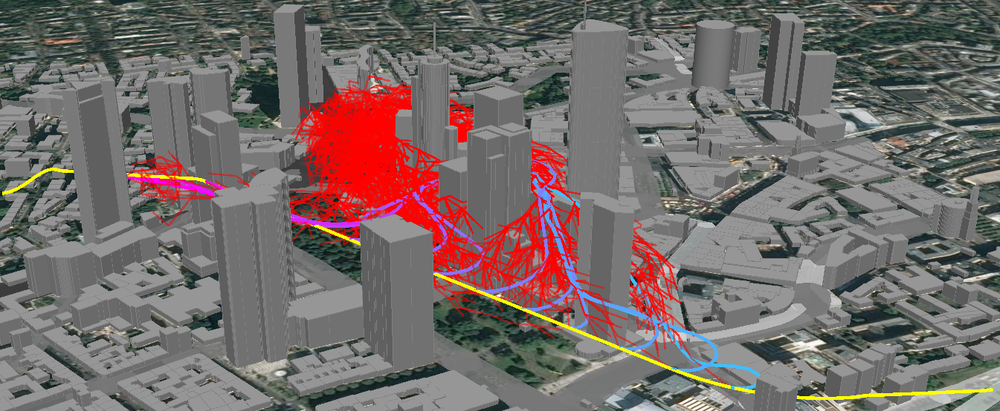Safe Autonomy

Safe autonomous flight – a vision that opens up many new fields of application for unmanned aerial vehicles, such as
- remote sensing in disaster relief, environmental protection, agriculture infrastructure inspection, and defense,
- transport and delivery of goods in humanitarian aid or in remote regions,
- urban air mobility with electrically powered aircraft,
- surveillance of company premises, large events and traffic incidents.
Safe autonomous flight, i.e. flight without the necessity of a human pilot in the loop, is made possible by the use of artificial intelligence. With the help of integrated on-board sensors and systems, the unmanned aircraft is not only able to detect its own state (e.g. its position and location in space), but also to perceive its surroundings (e.g. people, objects, obstacles) and react to them independently. The use of intelligent algorithms for autonomous navigation, flight guidance and control also entails new safety risks. This requires new methods and tools for the design, development, certification and operation of UAS. New regulations and standards are needed to ensure that UAS meet high safety standards when operated autonomously.
To realize the vision of safe unmanned flight, the Safe Autonomy team is conducting research in the following areas:
Intelligent Mission Management
In the future, unmanned aerial vehicles will perform complex tasks and carry out missions autonomously, i.e. without human intervention. The human pilot's ability to grasp the overall situation of the aircraft and to make mission- and safety-critical decisions will be automated by an intelligent system, the mission management. To meet the high safety requirements of aviation, the software and algorithms that implement mission management functionality are subjected to extensive analysis and testing. This ensures that correct decisions are made in all conceivable situations. The development and standardization of suitable system architectures and verification methods for such decision systems is an important part of the research. Mission management also includes the task of communicating with other aircraft, the ground control station, air traffic control and other stakeholders. This communication and interaction between autonomous systems and human actors is an essential part of the safe operation of autonomous UAS.
Mission planning and trajectory optimization
Based on maps and sensor data processed using artificial intelligence, planning algorithms calculate optimal flight routes and trajectories, taking into account flight performance, flight dynamics, wind and the respective mission requirements. For autonomous flight, it is particularly important that the unmanned aerial vehicle can also reschedule its own route independently during the flight. This enables a delivery drone, for example, to divert in time to a safe alternative landing site if a change in the weather makes the onward flight too risky. Even if the radio connection to the ground control station is interrupted, the aircraft should be able to make intelligent decisions independently and continue the flight safely. The focus of research is therefore on efficient algorithms for motion planning and multi-target optimization, as well as the integration of on-board autonomous systems for mission and trajectory optimization.
Task-based and robust flight control
The automatic execution of complex mission tasks often requires customized solutions for flight control that go beyond basic capabilities (e.g. waypoint navigation). Real challenges of flying – even for human pilots – are, for example, air-to-air refueling or landing on a ship deck in rough seas. The automation of these flight control tasks requires the use of specialized algorithms that are robust to uncertainties in the state estimation and system modeling. Often, additional sensors or systems, such as an oscillating external load or a special landing device, must be taken into account. Research into solutions for these diverse challenges in control engineering will make a significant contribution to the future development of safe autonomous UAS.
Verification and validation of artificial intelligence
Algorithms of artificial intelligence are essential for the realization of autonomous unmanned flight. In particular, machine learning can be used to automate complex tasks such as perceiving the environment using optical sensors or detecting anomalies in system behavior. In this context, one of the key challenges is to verify the safe and correct functioning of the algorithms and the integrated systems. New methods of verification are therefore required for use in safety-critical applications, which also includes autonomous unmanned flight. On the one hand, this includes analyzing the algorithms with regard to their functionality and various properties. On the other hand, runtime monitoring and validation can significantly simplify the verification process. In particular, the use of formal methods offers great potential in this context. The aim of research in these areas is to enable and advance the verifiably safe use of artificial intelligence in UAS.
